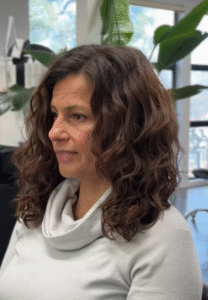Curly hair has always been a feature that stands out. Spirals, coils, and waves have a rhythm of their own, creating movement that feels alive. But for generations, those same curls were treated as flaws. People with textured hair were told to straighten it for school pictures, interviews, and special occasions. They were encouraged to hide it behind blow dryers, irons, and chemical relaxers, all in the pursuit of a smoother, sleeker look. This pressure left countless individuals with damaged strands and the painful belief that their natural beauty was not enough.
The transformation that has taken place in recent years marks a cultural and personal shift. Curly hair is no longer being forced into conformity—it is being celebrated. The curly hair movement has become a symbol of individuality, freedom, and pride, encouraging people to embrace their natural textures as part of who they are. For many, it is not just about beauty but about reclaiming a piece of their identity.
Part of the transformation comes from knowledge. The unique structure of curls means that natural oils from the scalp have a harder time coating each strand. This is why curly hair is more prone to dryness and frizz. In the past, using shampoos designed for straight hair only made things worse, stripping away what little moisture remained. Today, routines emphasize hydration and care. Gentle cleansers preserve natural oils, conditioners restore softness, and deep treatments repair damage caused by years of heat. Oils such as coconut, argan, and jojoba help lock in hydration, giving curls strength, bounce, and shine.
Styling has also been reimagined. Rather than flattening curls into submission, people are learning to enhance their natural shape. Finger-coiling defines spirals, twist-outs bring texture to life, and plopping helps curls dry with less frizz. Diffusers are used on low heat to protect delicate strands while adding volume. Modern mousses, gels, and creams offer hold without stiffness, allowing curls to remain soft and touchable. Protective styles such as braids or buns add variety and give curls the chance to rest. These changes have turned styling into a form of expression rather than a daily battle.
The cultural shift has been just as powerful as the practical one. Social media has created communities where people share routines, transformation stories, and encouragement. Before-and-after photos show more than just different hairstyles—they reveal renewed confidence. Representation in fashion, advertising, and entertainment has grown as well. Curls are no longer straightened for the red carpet; they are worn proudly, showing that natural texture deserves visibility at the highest levels.
The emotional impact of embracing curls cannot be overstated. People who once felt insecure about their appearance now describe their curls as their proudest feature. Parents are raising their children to love their natural texture from an early age, ensuring that future generations grow up with pride instead of doubt. For many adults, the decision to embrace their curls has been deeply healing, replacing years of frustration with a sense of freedom and authenticity.
The curly hair transformation is not just about changing products or routines—it is about rewriting the story of beauty itself. Spirals, waves, and coils are not something to correct. They are symbols of resilience, individuality, and strength.
When embraced with confidence, curls become more than just hair. They become crowns—bold, radiant, and deeply personal, reminding the world that true beauty lies in authenticity and self-love.


